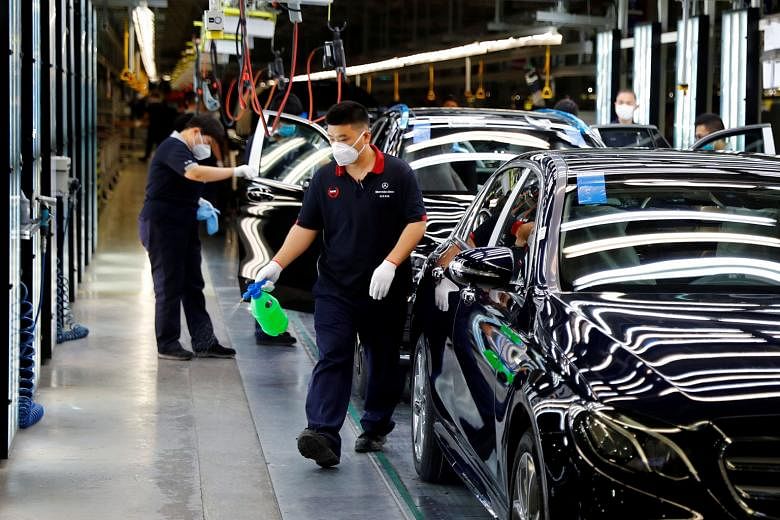BEIJING/TOKYO • China's factories stepped up activity in July for the fifth straight month as improving prospects for electrical and pharmaceutical goods helped sustain a broader recovery from earlier coronavirus shutdowns.
The world's second-largest economy has largely shaken off the strict lockdowns that led to weeks of business paralysis earlier this year, although it is now battling a resurgence of the coronavirus, driven by infections in the country's west and north-east.
The government's manufacturing Purchasing Managers' Index (PMI), released yesterday by the National Bureau of Statistics, unexpectedly rose to 51.1 in July from June's 50.9. That was the highest reading since March and beat analyst expectations for a fall to 50.7. The 50-point mark separates growth from contraction.
The PMI echoed upbeat readings from other major Asian export nations, with factory production in South Korea jumping at the fastest rate in more than 11 years, and Japan's output snapping four months of decline.
However, analysts caution that the recovery could stall amid rising global infections and as China's factories deal with flood disruptions.
"The current rapid pace of recovery is likely to slow in the coming months as the initial boost from reopening businesses fades," said Capital Economics analyst Julian Evans-Pritchard. "The prop to exports from shipments of goods linked to the pandemic (like masks and work-from-home equipment) is also likely to diminish."
Reinforcing the downbeat outlook for global demand, industry research released yesterday showed worldwide smartphone sales down 14 per cent year on year in the second quarter.
China's PMI survey showed new export orders fell, indicating continued pressure on external demand, while firms continued to shed more workers than they hired. But the pace of declines slowed from the previous month, suggesting a bottoming out in these trends, while production and total new orders both hit four-month highs.
Small companies continue to feel both supply and demand pressure, with a sub-index for them falling further into contraction.
Japan also showed signs of modest recovery in broader business and consumer activity as industrial output snapped four months of decline in June. Official data released yesterday showed factory output in the world's third-largest economy rose 2.7 per cent in June from the previous month when it hit its lowest level since March 2009 during the global financial crisis.
The rise was largely thanks to a bounce in motor vehicle production, and beat the median forecast for a 1.2 per cent increase in a Reuters poll of economists. Japan's economic activity has gradually resumed in recent months after the government lifted a state of emergency at the end of May.
Separate data showed its June jobless rate edged down from a three-year high reached in the previous month, although the number of available jobs per applicant fell to a more than five-year low.
REUTERS

